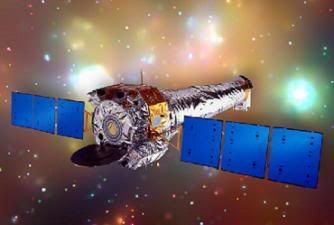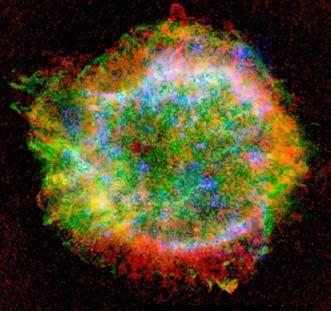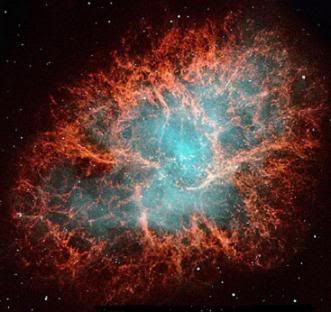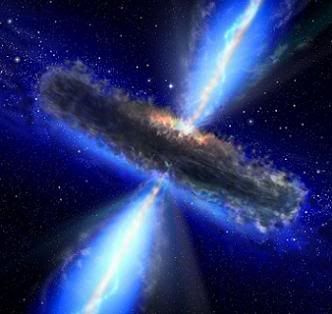Post by glactus on Aug 26, 2009 21:36:51 GMT

The Chandra x-ray observatory
About ten years ago Space Shuttle Columbia launched hauling 55,000 pounds worth of astronomers' dreams - the Chandra X-Ray Observatory.
This was the heaviest payload a space shuttle ever lifted - and one of the best day's labor the work-horse space shuttle ever put in. August 19, 2009, marked Chandra's 10 year "first light" anniversary. Last week some Chandra team members celebrated the observatory's past decade of dramatic discoveries.
Not only did all Chandra 's systems work, it triumphed. And it's still going. The observatory is ready to take its second generation of explorers on a wild ride through the cosmos.
To the naked eye, and even to some types of telescopes, the night sky looks serene. But the universe is really a place of sudden and chaotic violence, teeming with supernova explosions, million-degree clouds of intergalactic gas, and seething disks of torn-up matter swirling around black holes.
Chandra is unique in its ability to see this crucial hot world that holds the key to so many scientific mysteries.
And it all started when the "Cassiopeia A" supernova remnant posed for Chandra's official first light image. Scientists deduced that material blasted into space from the explosion crashed into surrounding material at 10 million miles per hour. The collision caused violent shock waves, like massive sonic booms, spawning an enormous 50-million degree bubble of X-ray emitting gas.

Cassiopeia "A"
Heavy elements in the hot gas produce X-rays of specific energies. Chandra can precisely measure these X-rays and reveal how much of each element is present. With this information, astronomers can probe how the elements necessary for life are created and spread throughout the galaxy by exploding stars.
In short, Chandra has helped confirm that we are star stuff.
"The air we breathe, the calcium in our bones and the iron in our blood, all came from stars that passed away billions of years ago."
Combined with observations from the Hubble Space Telescope, Chandra data yielded clues about how rotation of the pulsing neutron star at the center of the Crab Nebula powers the nebula, which still glows brightly 1,000 years after the explosion.

The Crab nebula
Chandra has given scientists new information about the X-ray jets blasting from black holes and found proof for the first time of two supermassive black holes in the same galaxy.

Artist's rendering of a Black Hole
And there's more. Chandra has helped flush dark matter out of hiding, advanced the study of dark energy, given us clues about how the universe has evolved over time, and even taught us something about the planets which are excellent x-ray sources.
Credits: These are NASA Chandra images
Text: This is part text only. See full text and all scientists involved at Space daily.com www.spacedaily.com/reports/Chandra_Turns_Ten_999.html


